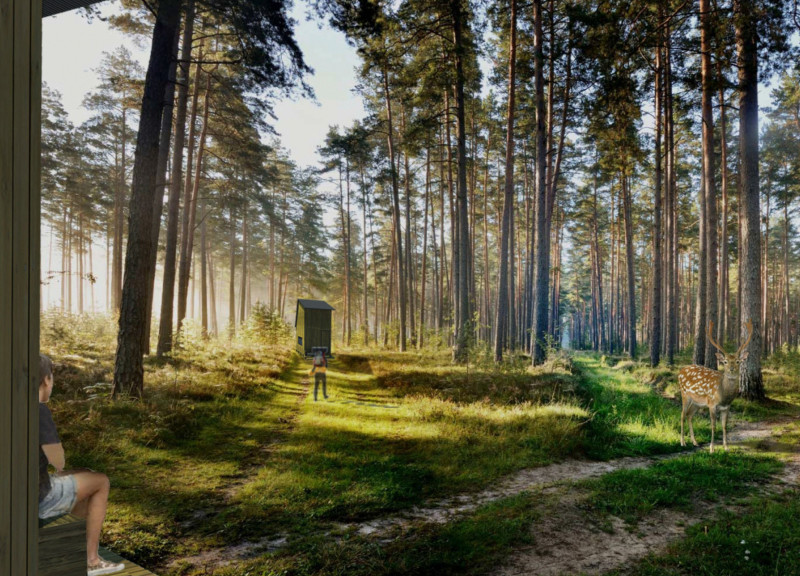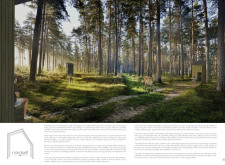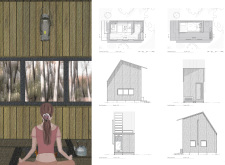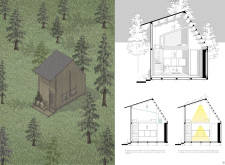5 key facts about this project
The Mindself Silent Cabin is designed as a retreat for meditation and self-reflection, located in a peaceful natural environment. It serves as a space where users can disconnect from their everyday lives and reconnect with their surroundings and themselves. The design focuses on simplicity and aims to create a calming atmosphere that encourages mindfulness and introspection.
Site Integration
The cabin features vertical facades made from local wooden boards that mimic the surrounding trees. This choice reinforces the connection between the cabin and its environment, allowing it to blend in naturally. The design is kept straightforward to ensure the focus remains on the beautiful landscape that envelops the structure.
Interior Layout
Inside, the cabin prioritizes the use of natural light, enhancing the overall experience for occupants. A wood burning stove supplies warmth and comfort, while the layout includes a mezzanine that opens up the ground floor for various activities. The incorporation of roof windows allows sunlight to enter, creating changing patterns of light and shadow throughout the day, which adds to the tranquil setting.
Sustainable Practices
Sustainability is a key aspect of the Mindself Silent Cabin. Locally sourced materials are used for construction, ensuring that the building fits well into its environment and supports local resources. The design includes a trombe wall system that captures solar energy for heating throughout the year. Furthermore, rainwater collection systems are in place to facilitate responsible water management.
User Experience
The design pays careful attention to user experience, particularly through the inclusion of an outdoor terrace that extends the living space. This terrace has a seating area for quiet reflection and is elevated on small columns to protect it from environmental factors such as snow and water. The space invites occupants to step outside and enjoy nature while the small campfire area offers a simple way to warm tea, fostering a connection to the elements.
The interplay between light and shadow within the cabin enhances its peaceful atmosphere. The design encourages users to engage with their thoughts and surroundings, creating a meaningful place for reflection and mindfulness.





















































